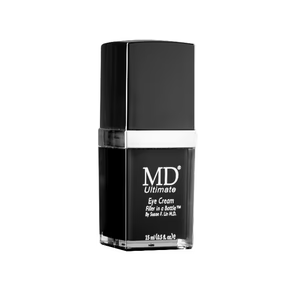Lymphoma, a type of blood cancer, starts in lymphocytes and affects the immune system. Although there are many different types of lymphoma, and each type may have its causes, researchers believe that genetic and environmental factors play a role in causing most cases.
Understanding Lymphoma
Lymphoma is a cancer that starts in the lymphocytes, which are white blood cells. The two main types of lymphoma are Hodgkin’s disease and non-Hodgkin’s disease.
In Hodgkin’s disease, there are abnormal collections (nodes) of lymphocytes throughout the body. These nodes can be felt under your skin as firm nodules or swellings. They may also be found inside the chest cavity or abdomen.
If they’re in your chest cavity, they might cause pain when breathing deeply or coughing. If they’re in your belly area, they might make it hard for you to eat because food gets stuck between them and other organs, such as your intestines or liver, or even cause nausea if you overeat at once.
Most non-Hodgkins involve certain white blood cells called B cells instead of T cells. They tend to spread through outlying sites such as bone marrow rather than forming large masses like Hodgkin’s does.
Therefore, symptoms may include weight loss due to poor appetite/nausea from chemotherapy side effects rather than pain due to swelling from enlarged nodes like Hodgkin’s disease. More than 80 different types of NHL have been identified based on the origin of the B, T, and NK cells. Diffuse large B cell lymphoma comprises 27% of the cases.
Genetic Factors Can Cause Lymphoma
If you have a family history of cancer, including lymphoma, you must talk with your doctor about whether genetic testing may be proper for you. In the case of follicular lymphoma, the cells exchange DNA between chromosomes 14 and 18, which turns on the BCL-2 oncogene. This gene stops the infected cells from dying naturally, leading to lymphoma through genetics.
You can also find out if you have a genetic risk factor by getting tested for mutations in some genes known to increase the risk for certain cancers (like BRCA1 or BRCA2). If these mutations are present in your DNA, they mean that there’s an increased chance that you’ll get certain types of cancers, including lymphoma, in the future.
If this interests you but feels overwhelming right now, don’t worry. There are lots of resources out there designed specifically with people like you in mind. For instance, there are:
- Doctors who specialize in treating patients at high risk for developing certain conditions.
- Online communities where people share experiences and tips.
- Apps that can help keep track of appointments while providing reminders when they’re coming up so nothing slips through the cracks.
Aqueous Film Forming Foam Can Cause Lymphoma
Aqueous Film Forming Foam (AFFF) is a chemical found in firefighting foam. When it comes into contact with water, AFFF forms a film that seals oxygen and prevents fires from burning. This can be helpful in an emergency, but it’s also been linked to many types of cancer, including lymphoma.
According to TorHoerman Law, firefighting foam includes Per- and Polyfluorinated Substances (PFAS) chemicals. These chemicals are linked to lymphoma and other cancers.
In fact, there has also been an increase in the number of lawsuits filed against firefighting foam manufacturers because of their association with lymphoma. If you are a firefighter or exposed to AFFF and have developed lymphoma or other cancers, you can file a firefighting foam cancer lawsuit. This will allow you to fight for compensation for the medical expenses and other economic losses you have experienced because of your medical condition.
Environmental Factors Can Cause Lymphoma
Environmental factors can also lead to lymphoma, especially if you have been constantly exposed to the triggers of the condition. For instance, one of the triggers is radiation. So, if you have been exposed to radiation, there is a high chance that it can cause lymphoma. This type of exposure includes:
- Working at jobs where you are exposed to high radiation levels, such as a nuclear power plant.
- Living near nuclear facilities that release radioactive material into the air or soil, such as Rocky Flats.
- Being treated with X-rays or other ionizing radiation as part of your medical care.
Most of the information about the above comes from research on the April 1986 nuclear power plant disaster at Chornobyl in Ukraine. The I-131, Cs-134, Cs-137, and Sr-90 were behind most cancers.
Infections and Lymphoma
Infections are a common cause of lymphoma. Bacteria, viruses, fungi, and parasites can all lead to this cancer-causing disease.
Lymphoma is not just one type of cancer; it’s a family of blood cancers that affects the body’s lymph system. Lymphomas come from these immune cells when they become abnormal and grow out of control.
Infections that can lead to DLBCL include:
- Hepatitis C virus (HCV) infection.
- Human T-cell leukemia virus type 1 (HTLV1) infection.
For patients receiving B-cell-depleting drugs, hepatitis B virus (HBV) reactivation is also common. However, those receiving prophylactic antiviral therapy have a reduced incidence of relapse. Recently, a survey was conducted on 82 cancer patients with chronic HCV infection who were on ICIs. But, in this case, viral reactivation did not occur.
Immune System Dysfunction Can Cause Lymphoma
A genetic abnormality, an environmental factor, or an infection can affect the immune system. This is because the immune system can help fight cancer cells. It has the ability to identify abnormal cells to kill them eventually.
Immunodeficiency disorders are diseases where the body’s defense mechanisms are weakened or missing altogether. For instance, AIDS (acquired immunodeficiency syndrome) is an autoimmune condition that can lead to lymphoma.
Emerging Research and Risk Factors
Researchers have recently discovered that several environmental factors can increase your risk of developing lymphoma. These include:
- Exposure to radiation (such as X-rays) or other toxins, like asbestos.
- Working in specific industries, such as farming and mining.
While these factors are known to cause certain types of lymphomas, they do not explain why other people exposed to the same substances do not develop cancer. In addition to these environmental factors, several genetic mutations are associated with certain subtypes of non-Hodgkin’s lymphoma (NHL).
Conclusion
In the end, many factors can contribute to lymphoma. However, it’s important to remember that these are just some of the most common causes of this disease. If you or someone in your family has been diagnosed with lymphoma, it’s essential to talk with a doctor about treatment options and what steps can be taken next.














